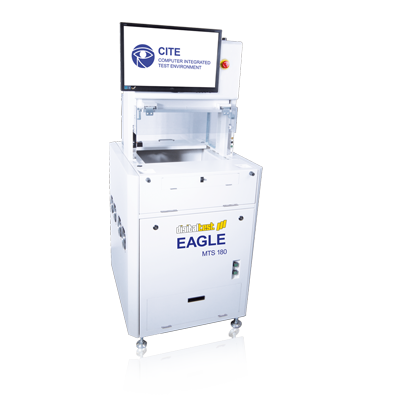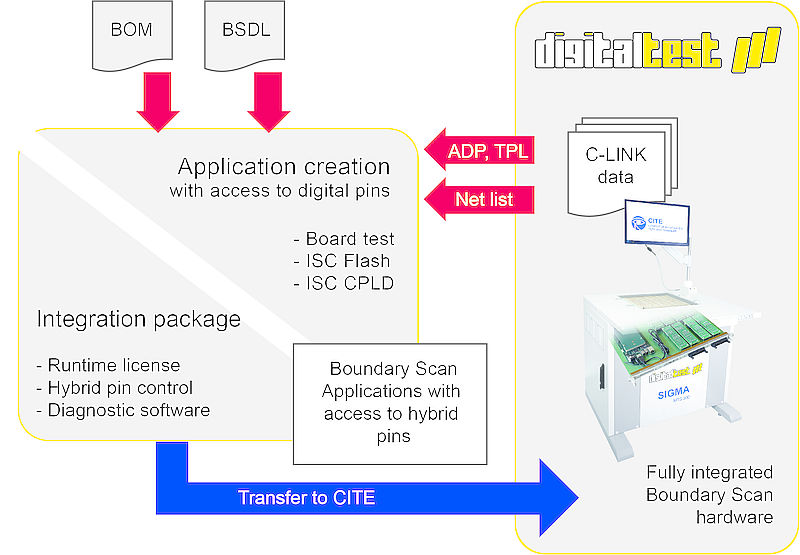Lexicon
Boundary Scan
Boundary Scan is an electronic test procedure that tests digital and analog components on the board, even if their networks cannot be contacted. Unlike the in-circuit test and flying probe test, the test is not accessed via test pins, but via boundary-scan cells. This makes physical access unnecessary. However, tests of analog components are only possible to a limited extent or are not available at all. In addition, a sufficient number of components on a DUT must be Boundary Scan capable. This must be planned during the circuit design.
Boundary scan with in-circuit test
A combination of Boundary Scan with an In-Circuit-Tester optimally exploits the strengths of the individual test procedures. The use of Boundary Scan can minimize the number of test points required for ICT, since the components connected to a network are already covered by the Boundary Scan test. This may simplify the circuit design (it is no longer necessary to provide a test point at each network for a high test coverage) or reduce the fixture costs for the ICT, since not every existing test point has to be contacted. The more points can be tested by Boundary Scan, the more cost-efficient the combination of methods becomes.
Boundary Scan with Flying Probe Test
The combination of Flying Probe and Boundary Scan allows one weak point of the Flying Probe test - the cycle time - to be improved. The more networks/components are tested by Boundary Scan, the fewer tasks the Flying Prober has. This allows for a flexible test in which the longer test time of the Flying Probe Tester is less important. In addition, the Flying Probe needles can function as virtual Boundary Scan cells and thus enable tests that would not be possible with Boundary Scan alone.


















